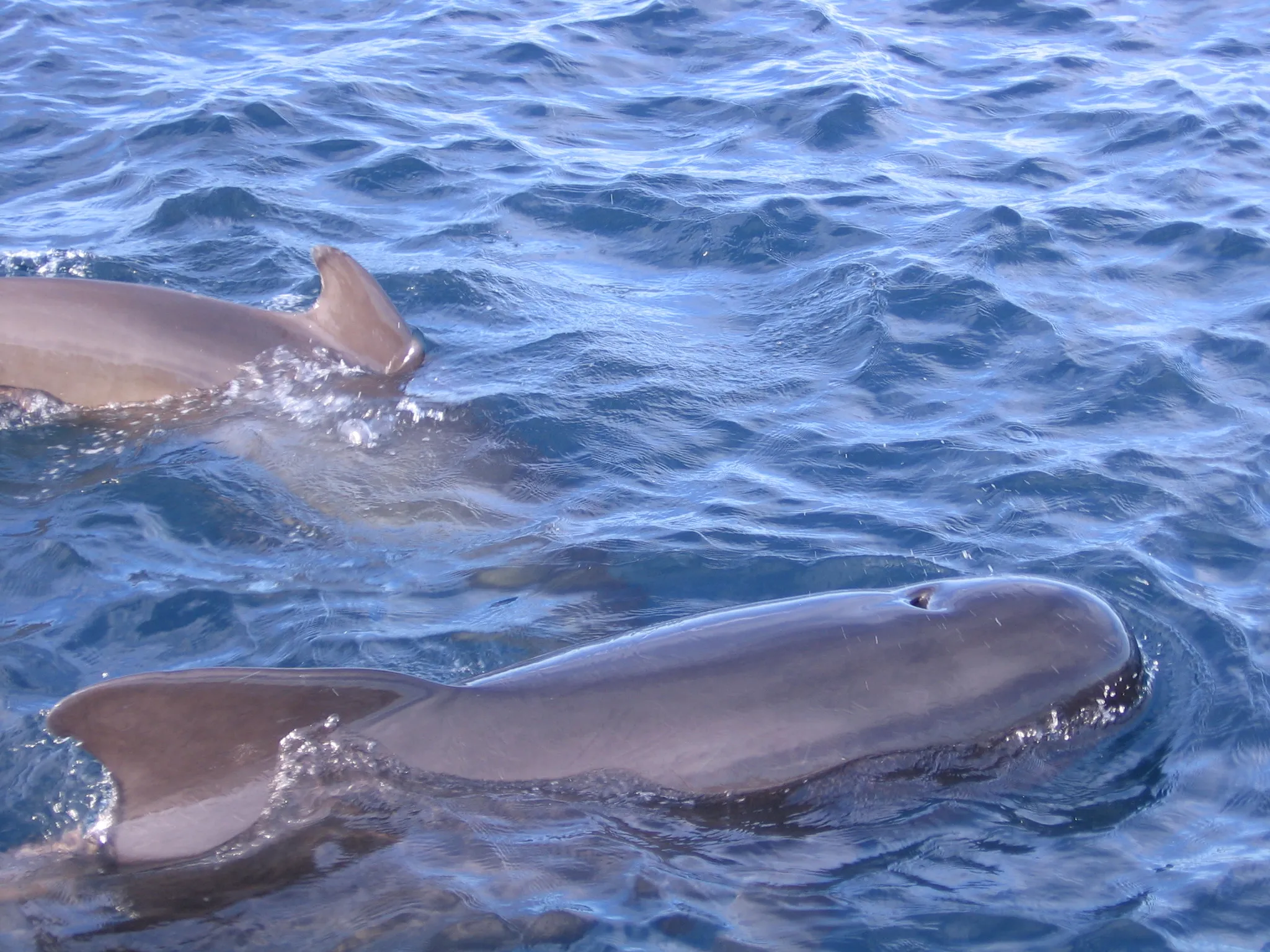
Long-finned Pilot Whale
Long-finned Pilot Whale
Long-finned Pilot Whale
The long-finned pilot whale, inhabiting the cold waters of the North Atlantic and Southern Hemisphere, is a fascinating dolphin species known for its distinctive long pectoral fins and rounded head. Highly social, these whales often form large pods. Reaching lengths of up to 22 feet (6.7 meters), they thrive in cold waters, with squid and small fish as their primary food source. Let's explore the world of the long-finned pilot whale, their complex social structures, and the challenges they face in today's oceans.
Long-finned Pilot Whale Basic Infomation

| Property | Value |
|---|---|
| Scientific Name | Globicephala melas |
| Taxonomic Status | ACCEPTED |
| Rank | SPECIES |
| Vernacular Names | Long-finned Pilot Whale |
| Kingdom | Animalia |
| Phylum | Chordata |
| Class | Mammalia |
| Order | Cetartiodactyla |
| Family | Delphinidae |
| Genus | Globicephala |
| Habitats | Cold temperate waters |
| Conservation Status | Least Concern |

Habitat
Long-finned pilot whales inhabit the cold temperate waters of the North Atlantic and Southern Hemisphere, frequently found along the edges of continental shelves.
.webp?alt=media)
Size and Weight
Adult males can reach up to 22 feet (6.7 meters) in length and weigh approximately 4,400 pounds (2 tons), while females are around 18 feet (5.7 meters) long.

Physical Characteristics
They have a distinctive black or dark gray coloration, long pectoral fins, a bulbous head, and a robust body.

Diet
They primarily feed on squid and small fish, often hunting at night.

Ecology
They are highly social creatures, forming pods of 20 to 100 individuals.
.webp?alt=media)
Lifespan
Their average lifespan is about 60 years.

Conservation Status
The IUCN classifies long-finned pilot whales as Least Concern, but whaling and bycatch from fisheries pose significant threats to their populations.
Long-finned Pilot Whale Q&A

What are the distinguishing features of the long-finned pilot whale?
Long-finned pilot whales are characterized by their long pectoral fins and their dark gray or black coloration.
.webp?alt=media)
What do long-finned pilot whales eat?
Their diet mainly consists of squid and small fish.

[Quiz!] Why do long-finned pilot whales mass strand?
Mass strandings, where large groups of whales beach themselves, are a concerning phenomenon observed in long-finned pilot whales. While the exact reasons are not fully understood, several theories exist:
• Echolocation Errors: Their echolocation, used for navigation, may malfunction in shallow waters, leading them to accidentally strand.
• Following the Leader: Their strong social bonds and tendency to follow a leader can result in mass strandings if the leader gets disoriented or stranded.
• Other Contributing Factors: Illness, injury, geomagnetic anomalies, and panic induced by human activities or natural events can also contribute to strandings.
Mass strandings are a serious threat to these whales and require immediate rescue efforts and further research to understand and mitigate the causes.

[Quiz!] What is the conservation status of the long-finned pilot whale?
The IUCN classifies the long-finned pilot whale as 'Least Concern.' However, they face threats from whaling and bycatch.

Would you like to become a part of the 'Animalbook.jp'?
Turn your knowledge into Q&A and share it with the world. ※Publication will be activated after purchase. Let's share information together!
Long-finned Pilot Whale Type of List

Other dolphin species include the short-finned pilot whale and the orca.
- Short-finned pilot whale
- Orca
Information
Congratulations! You are the first commenter!

Create Your Favorite List!
Long-finned Pilot Whale
Save the animals you love! Build your own list to quickly revisit your favorites later.

Would you like to leave a comment?
※Please note: This is for the purchase of rights to post comments within the article.
Find Your Favorites!
Our shop offers a unique and attractive selection of goods themed around various animals.
Long-finned Pilot Whale References
Long-finned Pilot Whale Introduction of media used

Aleuze, Public domain, via Wikimedia Commons
.webp?alt=media)
Rob Oo from NL, CC BY 2.0, via Wikimedia Commons

Mmo iwdg, CC BY-SA 3.0, via Wikimedia Commons

Dirk Klaus, CC BY-SA 3.0, via Wikimedia Commons

Help Enrich Our Animalbook.jp with Your Media!
We are constantly looking to expand and enrich our Animalbook.jp with amazing photos and videos of animals. If you have any media that you'd like to share, please contribute and help us showcase the beauty and diversity of the animal kingdom. Your submissions will be credited and featured in our encyclopedia, reaching a wide audience of animal lovers.


















